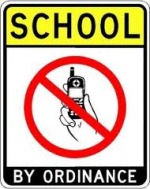 Mr. Rodger Is Dead, But His Neighborhood Has Expanded!
Mr. Rodger Is Dead, But His Neighborhood Has Expanded!
You cannot control who “follows” you when you tweet; in fact the more that follow, the greater prestige it holds, the higher level of privileges you earn. One simple “tweet” can touch as many as has “chosen” to follow you, and the power or retweets can impact thousands instantly. On the other hand, Facebook and Google+ turn the tables where you choose, you “invite” people as “friends” or in a “huddle”. You control your relationships to the level you with to communicate: to a one, or a chosen few, or a larger group, or public to the world!
 In my world, I was taught that you are not a “leader” unless you have a following. Today everyone is a leader because everyone has attracted a “following” no matter how shallow the relationship. Relationships are what defines this generation. I have taught 8th grade for 40 years, so I understand this concept, since relationships with peers and peer acceptance is the cornerstone of 8th grade social life. Academics are secondary in the mind of an 8th grader seeking peer contact and peer acceptance. Social network is an 8th grader’s dream come true. They now “know” how “accessible” they are with the number of “followers” they can attain on Twitter, or how many “friends” they have accepted on Facebook. They can feel “peer acceptance” through social networking. I know one student who has “befriended” almost every student in her high school electronically. Of course, the opposite can be true with “cyber-bullying” where one’s reputation can be ruined or damaged in an instant through the power of instantly communicating a slanderous lie or damaging gossip.
In my world, I was taught that you are not a “leader” unless you have a following. Today everyone is a leader because everyone has attracted a “following” no matter how shallow the relationship. Relationships are what defines this generation. I have taught 8th grade for 40 years, so I understand this concept, since relationships with peers and peer acceptance is the cornerstone of 8th grade social life. Academics are secondary in the mind of an 8th grader seeking peer contact and peer acceptance. Social network is an 8th grader’s dream come true. They now “know” how “accessible” they are with the number of “followers” they can attain on Twitter, or how many “friends” they have accepted on Facebook. They can feel “peer acceptance” through social networking. I know one student who has “befriended” almost every student in her high school electronically. Of course, the opposite can be true with “cyber-bullying” where one’s reputation can be ruined or damaged in an instant through the power of instantly communicating a slanderous lie or damaging gossip.
 Technology is moving so fast that public education cannot keep up with it. I have no idea why parents think schools are responsible for “cyber-bullying” when they have no control over the social networking of their students. I think that it is because parents do not understand the whole social networking world in which their children are immersed. Schools are wrestling with the question of IPhones, Smart Phones, that have WiFi capabilities because schools cannot control or block their reception to the internet. If parents did not put filters on their phones, they have an open world to the good, the bad, and the ugly of the social networking, internet, world wide web world.
Technology is moving so fast that public education cannot keep up with it. I have no idea why parents think schools are responsible for “cyber-bullying” when they have no control over the social networking of their students. I think that it is because parents do not understand the whole social networking world in which their children are immersed. Schools are wrestling with the question of IPhones, Smart Phones, that have WiFi capabilities because schools cannot control or block their reception to the internet. If parents did not put filters on their phones, they have an open world to the good, the bad, and the ugly of the social networking, internet, world wide web world.
So institutions have to face the “flat world” of this younger generation, for the nature of such institutions is control from the top on down, to set policies, to dictate what one can and can not do under their institutional guidelines. They are not sure how to relate or control this this “horizontal” movement of peer acceptance and accessibility. The church as an institution is no exception, for the institutions of denominationalism, sectarianism, mega-churchism are being challenged by the horizontal relationships of the “priesthood of believers”. The institutional church has yet to ask the questions of how it can relate to this new phenomenon which is quickly becoming a world wide movement that are breaking beyond institutional barriers in the name of accessibility and acceptability.
 8th graders want to be “accessible” to their friends. 8th graders want to be “acceptable” to their friends. Government, school, churches, etc. will need to address how they can become accessible and acceptable to a growing “world wide” population that thinks relationally, horizontally, opposing vertical or institutional structures. The younger generation has defined new lines as the way to think globally, socially, economically, and religiously. The next few years, months, weeks, days, should be interesting as we watch this evolution and the clashes it can produce.
8th graders want to be “accessible” to their friends. 8th graders want to be “acceptable” to their friends. Government, school, churches, etc. will need to address how they can become accessible and acceptable to a growing “world wide” population that thinks relationally, horizontally, opposing vertical or institutional structures. The younger generation has defined new lines as the way to think globally, socially, economically, and religiously. The next few years, months, weeks, days, should be interesting as we watch this evolution and the clashes it can produce.